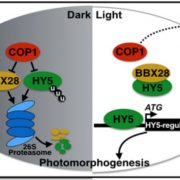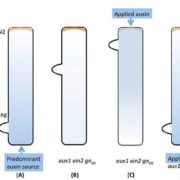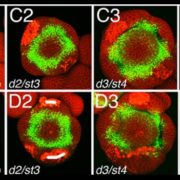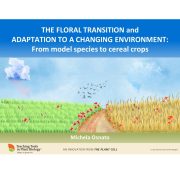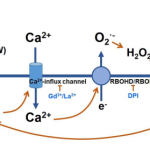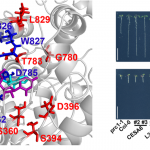Mutations PETALOSA cause a dominant double-flower phenotype (J. Exp. Bot.)
 Flower development has always been a fascinating field of research in plant biology. While molecular studies in the past focused on regulatory genes involved in the formation of floral organs in model species, current investigations are addressing the genetic determinants underlying the huge variety of flower. Recently, the genetic basis of the double flower trait was deciphered in ornamental plants belonging to the Rosaceae family. This phenotype is caused by mutations in the 3’ end of regulatory genes belonging to the TARGET OF EAT subfamily, which result in truncated transcripts lacking the miR172 target site crucial for post-transcriptional regulation. In this new article, Gattolin and coworkers analyzed the same mutations in orthologous genes which they named PETALOSA (PET) in important ornamental plants – including carnation, Petunia hybrida and Rosa rugosa. (Note – see the interesting story of the origin of this gene name, in Italian and in English). The pet mutant alleles co-segregated with the double flower phenotype in all commercial varieties examined. Considering that the single flower phenotype is the ancestral state for the ornamental plants studied, these findings suggest a convergent human selection of the double flower trait aimed at improving their attractiveness in phylogenetically distant eudicots. Finally, the authors provided evidence that genome editing could be successfully applied in economically important plants to modify flower shape. Indeed, a 1 bp insertion in tobacco PET genes obtained by CRISP-Cas9 technology correlates with the formation of supernumerary petals in transgenic plants. (Summary by Michela Osnato @michela_osnato) J. Exp. Bot. 10.1093/jxb/eraa032
Flower development has always been a fascinating field of research in plant biology. While molecular studies in the past focused on regulatory genes involved in the formation of floral organs in model species, current investigations are addressing the genetic determinants underlying the huge variety of flower. Recently, the genetic basis of the double flower trait was deciphered in ornamental plants belonging to the Rosaceae family. This phenotype is caused by mutations in the 3’ end of regulatory genes belonging to the TARGET OF EAT subfamily, which result in truncated transcripts lacking the miR172 target site crucial for post-transcriptional regulation. In this new article, Gattolin and coworkers analyzed the same mutations in orthologous genes which they named PETALOSA (PET) in important ornamental plants – including carnation, Petunia hybrida and Rosa rugosa. (Note – see the interesting story of the origin of this gene name, in Italian and in English). The pet mutant alleles co-segregated with the double flower phenotype in all commercial varieties examined. Considering that the single flower phenotype is the ancestral state for the ornamental plants studied, these findings suggest a convergent human selection of the double flower trait aimed at improving their attractiveness in phylogenetically distant eudicots. Finally, the authors provided evidence that genome editing could be successfully applied in economically important plants to modify flower shape. Indeed, a 1 bp insertion in tobacco PET genes obtained by CRISP-Cas9 technology correlates with the formation of supernumerary petals in transgenic plants. (Summary by Michela Osnato @michela_osnato) J. Exp. Bot. 10.1093/jxb/eraa032


